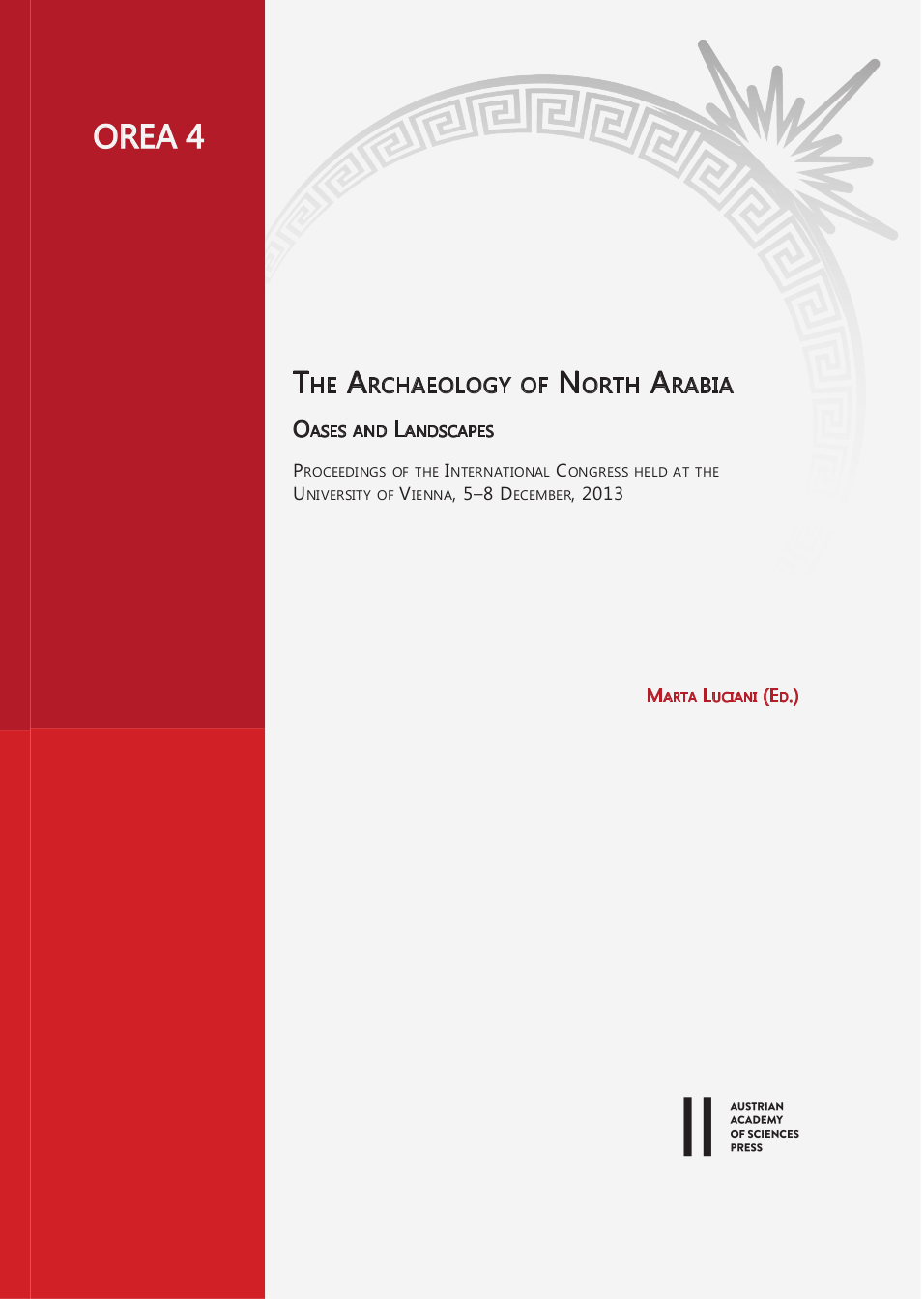
The Archaeology of North Arabia, Oases and Landscapes, pp. 299-316, 2016/11/30
Proceedings of the International Congress held at the
University of Vienna, 5-8 December, 2013
This paper gives a first picture of the role of Dūmat al-Jandal (ancient Adummatu) and the ‘al-Jawf’ region in the ancient roads system of northern Saudi Arabia. Due to its geographic position in the northern al-Nefūd Desert along the wādī al-Sirhān, the ancient Dūmat al-Jandal played a key role in the trade system of the Arabian Peninsula from prehistory to early Islamic times. Right from the first archaeological era, dating back to the Lower and Middle Palaeolithic, the al-Jawf appears to have seen the passage of people from Africa to the east. The Neolithic era accounts for a large number of sites throughout northern Saudi Arabia attesting how the present-day wadis were routes of passage and communication in the Peninsula. And sources from the 1st millennium BCE suggest that the ancient Adummatu was located between the southern and western caravan routes and the Fertile Crescent. During the Nabataean and Roman times, Dūmat al-Jandal seems to have had a direct link with the heart of the Nabataean realm and then with the Roman provinces, as confirmed by the identification of imported wares and military structures by the Saudi-Italian-French archaeological project. Finally, Dūmat al-Jandal experienced a period of rich commercial trading during the Byzantine and early Islamic domination, testified by the Islamic sources describing the role of the Dūmah ‘market’, Ukhaydir ibn ᶜAbd al-Mālik and the relations between Byzantium, the North Arabian Peninsula and the Sassanid Empire.
Keywords: Saudi Arabia, Neolithic, Bronze Age, caravan routes, Arabia